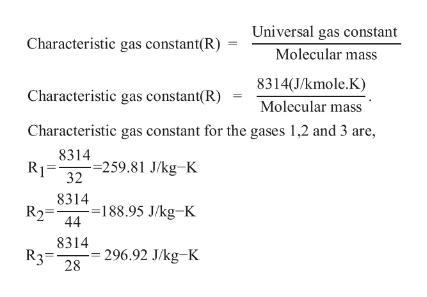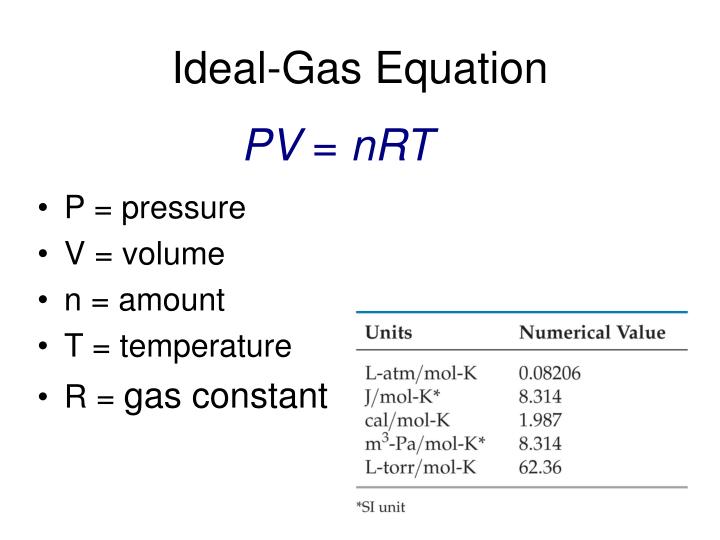
The molar gas constant (also known as the gas constant, universal gas constant, or ideal gas constant) is denoted by the symbol R or R. Therefore, ⁻M = ∑i xi Mi.Physical constant equivalent to the Boltzmann constant, but in different units Values of R So, the average molar mass of a mixture of gases is equal to the sum of the mole fractions of each gas (xi), multiplied by their respective molar masses (Mi).

The molar mass of an ideal gas can be calculated using a derivation of the Ideal Gas Law: PV = nRTīut how do you find the molar mass of a mixture of gases? Well, you need to take into account the molar mass of each gas in the mixture, and also their relative proportion.
#GAS CONSTANT IUNIT HOW TO#
Here’s how to calculate the Molar Mass using the Ideal Gas Equation: The molar mass of any gas is equal to the mass of a single particle of that gas multiplied by Avogadro’s number, which is 6.02 x 10 23. Knowing the molar mass of a compound or an element helps balance a reaction equation.

The molar volume of all gases is the same when they are measured at the same temperature and pressure, but the molar mass of different gases mostly varies. Molar mass, also referred to as molecular weight, is expressed in units of grams per mole (g mol –1 ). Molar mass (M) is equal to the mass of one mole of a particular element or compound. This equation presents that volume is proportional to the moles and the temperature, and inversely proportional to the pressure.įrom this, we get the ideal gas equation which is: The three individual expressions are as follows:Ĭombining these three expressions, we get Combining them in a single expression we get the Ideal gas equation which describes all the relationships simultaneously. The ideal gas law combines the observations of Robert Boyle, Gay-Lussac and Amedeo Avogadro. When we use the gas constant R = 0.082 L.atm/K.mol then pressure is in the unit of atmospheres (atm), volume is the unit of a litre (L) and the temperature T in the unit of kelvin (K). When we use the gas constant R = 8.31 J/K.mol, then the pressure (P) is in the unit of pascals (Pa), volume in the unit of m3 and the temperature T in the unit of kelvin K. The ideal gas law basically says that the product of the pressure and the volume of one gram molecule of an ideal gas is equal to the product of the universal gas constant and absolute temperature of the gas. The ideal gas law has several limitations, but it is good for deriving the approximate behaviour of many gases under several conditions. The ideal gas law was derived by the French engineer and physicist Benoit Paul Émile Clapeyron in 1834 as a combination of the empirical Charles’s law, Avogadro’s law and Boyle’s Law. The ideal gas law also known as the general gas equation, is an equation of the state of a hypothetical ideal gas. This equation gives the exact precise value of R. T is the temperature which is the triple point of water, A R (Ar) is the relative atomic mass of argon and Mᵤ is 10⁻³ kg per mole. Here, Y₀ is the heat capacity ratio which is 5/3 for monoatomic gases like argon. Now substitute pressure as force per unit area for deriving the dimensions of R. Hence, gas constant formula can be written as: PV=nRT, Here P is the pressure of the gas, V is the volume of the gas, T is the temperature of the gas on an absolute scale and n is the number of moles of the given gas. We find the dimensions of the ideal gas constant from the ideal gas equation which is given by: It relates the energy scale to the temperature scale in physics. The molar gas constant is a combination of Boyle's law, Charles law, Gay-Lussac’s law and Avogadro's number. It can also be written as joule per mole per Kelvin.

The SI unit of the ideal gas constant is Pascal or Newton per metre. The origin of the symbol R for the ideal gas constant is probably in honour of French chemist Henry Regnault who is known for his measurements of thermal properties of gases. This constant features in fundamental equations of physics like the ideal gas laws equations, the Arrhenius Equation and the Nernst equation. However, instead of the energy per temperature increment of a particle, it is expressed in terms of energy per temperature increment per mole which is also equivalent to the pressure-volume product. R can also be defined as Avogadro Number multiplied by Boltzmann Constant. It is equivalent to the Boltzmann Constant. The molar gas constant is denoted by the symbol R. Molar gas constant also known as gas constant, the universal gas constant, or the ideal gas constant is a fundamental physical constant that arises in the formulation of general gas laws.


 0 kommentar(er)
0 kommentar(er)
